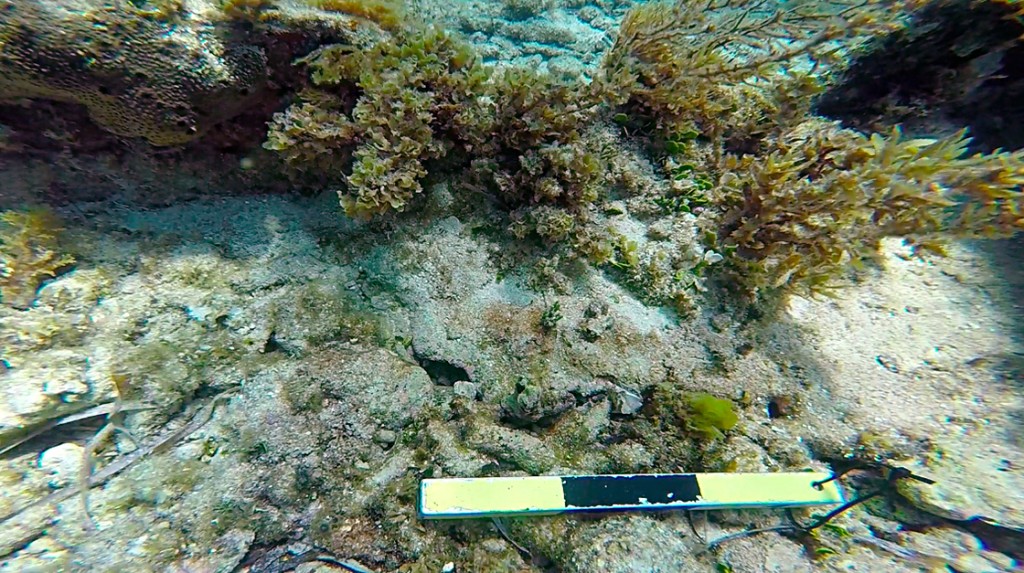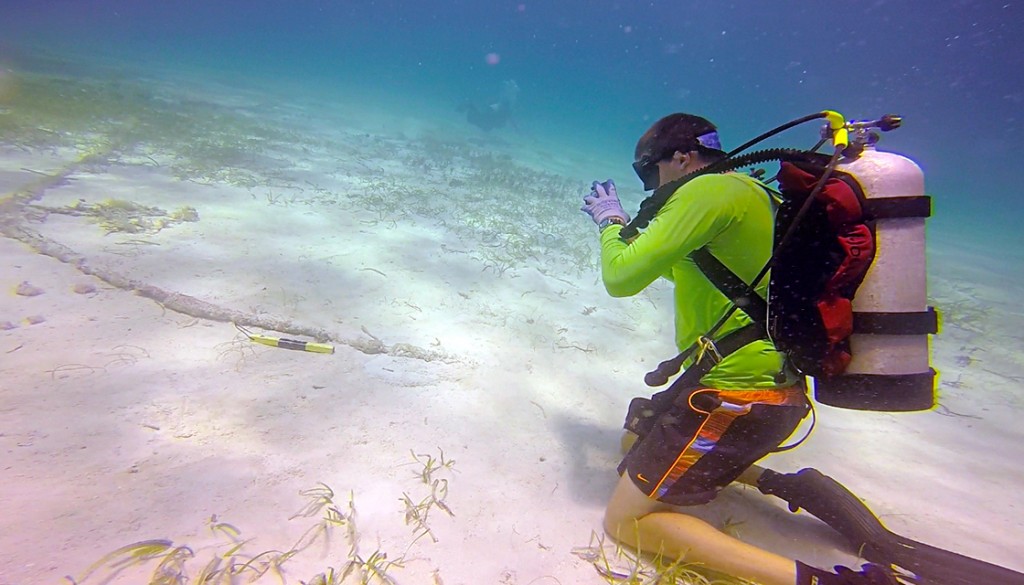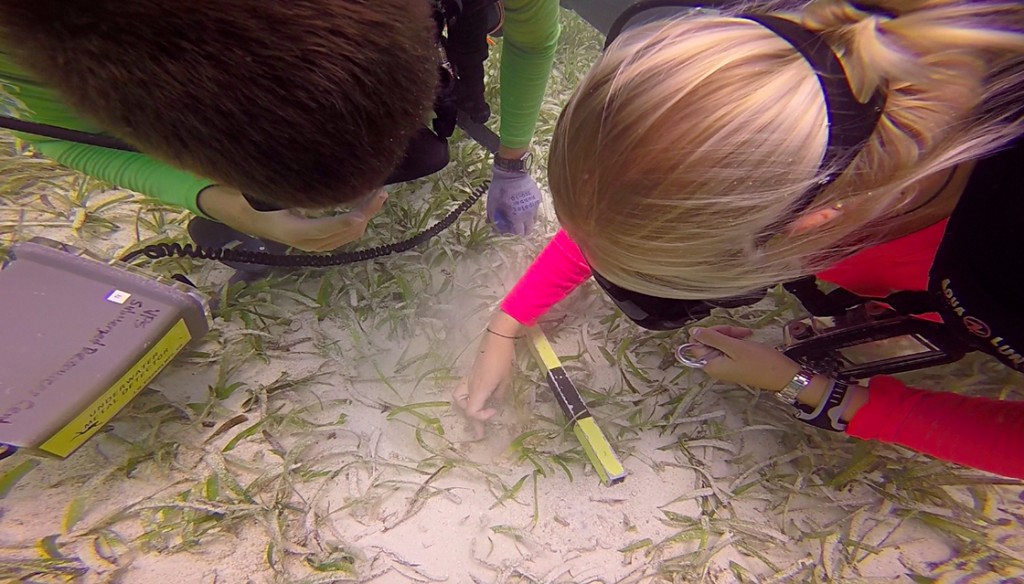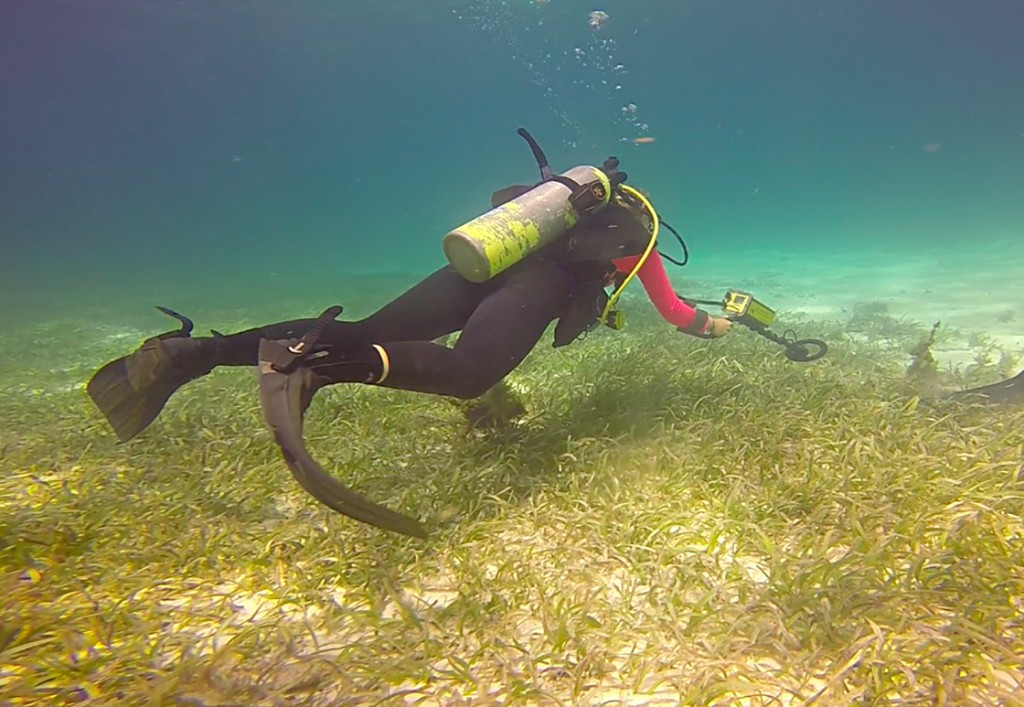
On some days we jumped up to 6 anomalies; the backwards roll is the preferred method of watery entry off of the Park Service’s boats.
After 2 eventful weeks in the USVI, I found myself back in South Florida at Biscayne National Park. It might sound odd, returning to BISC felt like the closest thing to coming home. Although this has been an experience of a lifetime, as soon as I feel acquainted with a particular Park, I’m already off to somewhere new. After bouncing from Park to Park all summer, it was good to see some familiar faces.
With so many different projects going on at BISC it wasn’t hard for me to find a way to be useful. Because I had already spent my previous two weeks at BISC working with natural resources, I decided to try my hand at exploring some of the Park’s cultural resources. As it happens, one of the interns I was staying with, Maddie Roth, would be “jumping anomalies” all week with an undergraduate volunteer from a local University. I figured I would lend a hand to see if I couldn’t learn a thing or two.

Often times the weather in the South Atlantic can turn without a moment’s notice. It wasn’t uncommon for a squall to blow through, leaving calm water and sunny skies in its wake.
Because of Biscayne Bay’s rich maritime history, and potential navigation hazards, the Park and outlying waters are teeming with cultural resources. From sunken ATONS to shipwrecks, and artifacts from the last couple of centuries, there’s a lot to explore. However, the Park covers a lot of area, so looking for submerged resources is kind of like looking for a needle in a haystack. Every so often the Park Service tows a magnetometer behind a boat, which helps locate magnetic anomalies. The coordinates are recorded and cataloged with reports from recreational divers of potential sites.

After an anomaly is found, it must be thoroughly documented. Aside from drawings and photographs, measurements must be recorded as well. Here Maddie prepares to take the length and width of an anomaly found amongst soft coral.
Our task for the week was to dive on some these anomalies by using reports from previous surveys. We’d pull up to a given area, and read off of the report sheet something to the effect of, “divers previously reported 7 metal pipes. In 2001 divers searched for 15min and could not locate said pipes.” So we’d drop anchor and scour the coral rubble or seagrass looking for the pipes. Or “metal pins” or “potential coal box”. Searching for a relatively obscure object in 10ft of water through seagrass or rubble or sand isn’t exactly the most exciting task. But it makes finding something of interest all the more remarkable.
- Many of the anomalies we were looking for would look like little more than junk to the untrained eye. However, artifacts like this coal box can help weave the tapestry of BISC’s rich maritime history.
- University of West Florida undergraduate volunteer Austin photographs a length of chain from the 19th century.
- Even though modern scientific tools can make certain projects a lot easier to deal with, sometimes the tried and true methods still work the best. After scanning the seagrass beds for a ping on the metal detector, Maddie and Austin used their hands to fan sand away from this metal object.
- The underwater metal detector is one of the most indispensible tools underwater archeologists use. Here Maddie scans the seagrass and sand, hopping to pick something up.
Most of the more interesting sites have already been well documented, so the interns tend to get handed the less desirable locations. However, on our first day we found a submerged ATON from the mid 19th century, and even a potential wreck! Mind you the “wreck” was a collection of wooden boards with metal pins scattered throughout 15ft of seagrass. Some salvager, the bane of the Cultural Resources team, had used a powered dredge to remove the seagrass around one of the wooden boards. Seeing nothing of interest to sell on the market they left the site alone. The amount of knowledge gained from continuous surveys of sites like this far outweighs the potential monetary gain from pillaging these cultural resources.

Rob Warra, of the South Florida Caribbean Monitoring Network invited me to dive with him one day. Unfortunately our day was cut short when some equipment flooded.
For the rest of the week we spent our days diving in various parts of the bay, hoping to find more potential sites. On some dives we got skunked, and couldn’t find much of anything. However, occasionally we would find something of interest. Because my background is mainly in natural resources, seeing first hand how cultural resources are documented and managed was certainly interesting. Plus, Maddie and Austin’s enthusiasm for the cultural resources found in the Park is infectious. We were also optimistic about finding new wrecks, which are certainly still lurking in BISC, waiting to be uncovered so their stories can be told again.
I’d like to thank Maddie Roth and Austin, Maddie’s intern, for putting up with me and answering all of my questions about underwater archaeology. Now I’m heading down to Key West to prepare for the last Park I’ll visit this summer. Dry Tortugas National Park here I come!
Thanks for reading.





